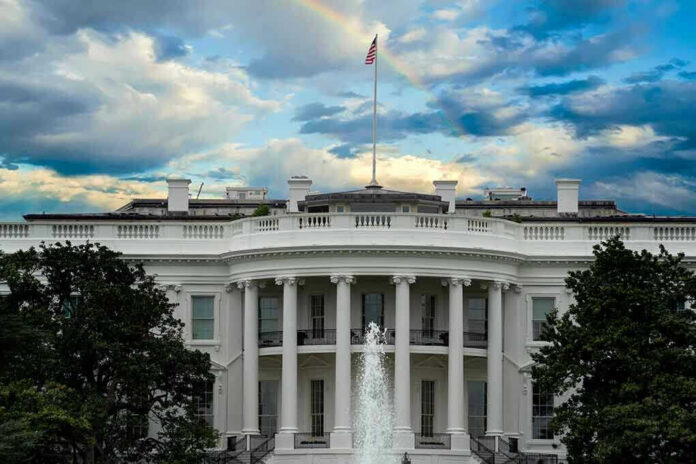
President Trump has broken his promise to preserve the White House East Wing, ordering its complete demolition for a massive $250 million ballroom project after initially vowing the historic structure would remain untouched.
Story Overview
- Trump reverses course on East Wing preservation, citing “structural reasons” for complete demolition.
- $250 million, 90,000-square-foot ballroom funded by private donors and major corporations.
- Alphabet is contributing $22 million as part of a legal settlement over Trump’s YouTube ban.
- Treasury Department restricts staff photos, citing security concerns amid public backlash.
Broken Promise Sparks Public Outcry
A senior White House official confirmed Wednesday that the entire East Wing will be demolished to accommodate Trump’s ambitious ballroom project.
This represents a complete reversal from Trump’s July promise that the ballroom would be built “near it but not touching it” and would “pay total respect to the existing building.” The official’s explanation was blunt: “Plans changed,” citing unspecified structural reasons for the decision.
Private Funding From Corporate Patriots
Trump announced the project will be privately funded through what he calls “generous Patriots, Great American Companies, and yours truly.”
Alphabet leads contributors with a $22 million settlement payment stemming from Trump’s YouTube platform ban after January 6, 2021. The tech giant’s contribution represents nearly 10% of construction costs and will flow through the Trust for the National Mall tax-exempt entity.
Trump to demolish entire East Wing of White House for ballroom: ‘Plans changed’https://t.co/CXBC6bJ7jF
— T.J. Meadows, Co-Host MetroNews Talkline (@TJMeadows304) October 22, 2025
Defense contractor Lockheed Martin confirmed its participation, stating the company is “grateful for the opportunity to help bring the President’s vision to reality.”
Additional corporate donors reportedly include R.J. Reynolds, Booz Allen Hamilton, Palantir, NextEra Energy, and media conglomerate Comcast. Most companies have declined to disclose donation amounts, raising transparency concerns about corporate influence on presidential projects.
Government Damage Control Efforts
The White House dismissed criticism as “manufactured outrage,” defending the ballroom as “a bold, necessary addition that echoes the storied history of improvements and additions” by previous presidents.
However, this comparison rings hollow given Trump’s explicit promise to preserve the existing structure. The Treasury Department’s ban on staff photography of the demolition, citing security risks, appears designed to limit public scrutiny of the controversial project.
Construction leadership includes McCrery Architects for design, Clark Construction for building, and AECOM for engineering.
Officials expect demolition completion by the weekend, with the new 90,000-square-foot ballroom promised to serve “presidents and first ladies for years to come.” The rapid timeline suggests significant pressure to complete the project quickly.
Constitutional Concerns Over Corporate Influence
The heavy corporate funding raises questions about potential conflicts of interest and undue influence on presidential decisions. When defense contractors and major corporations fund personal presidential projects, it creates concerning precedents for future administrations.
While Trump supporters may appreciate private funding reducing taxpayer burden, the opaque donor list and undisclosed contribution amounts undermine accountability principles that conservative governance should uphold.















